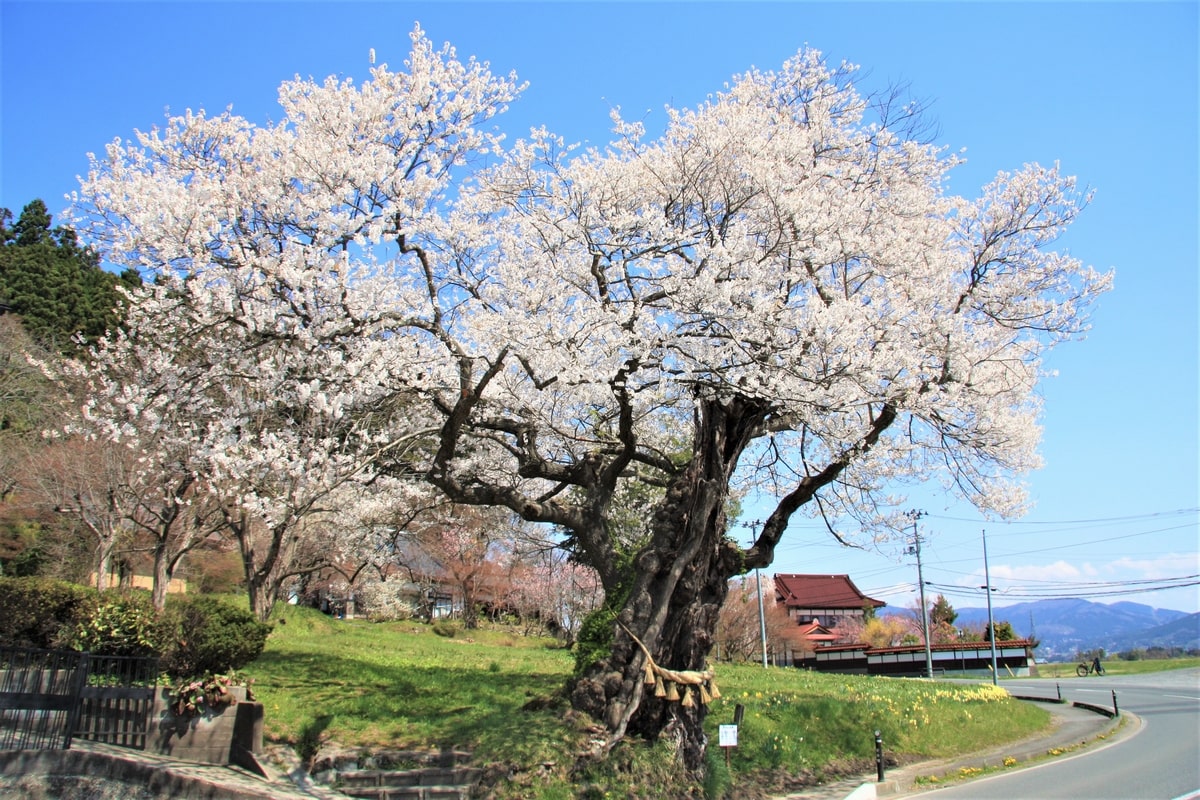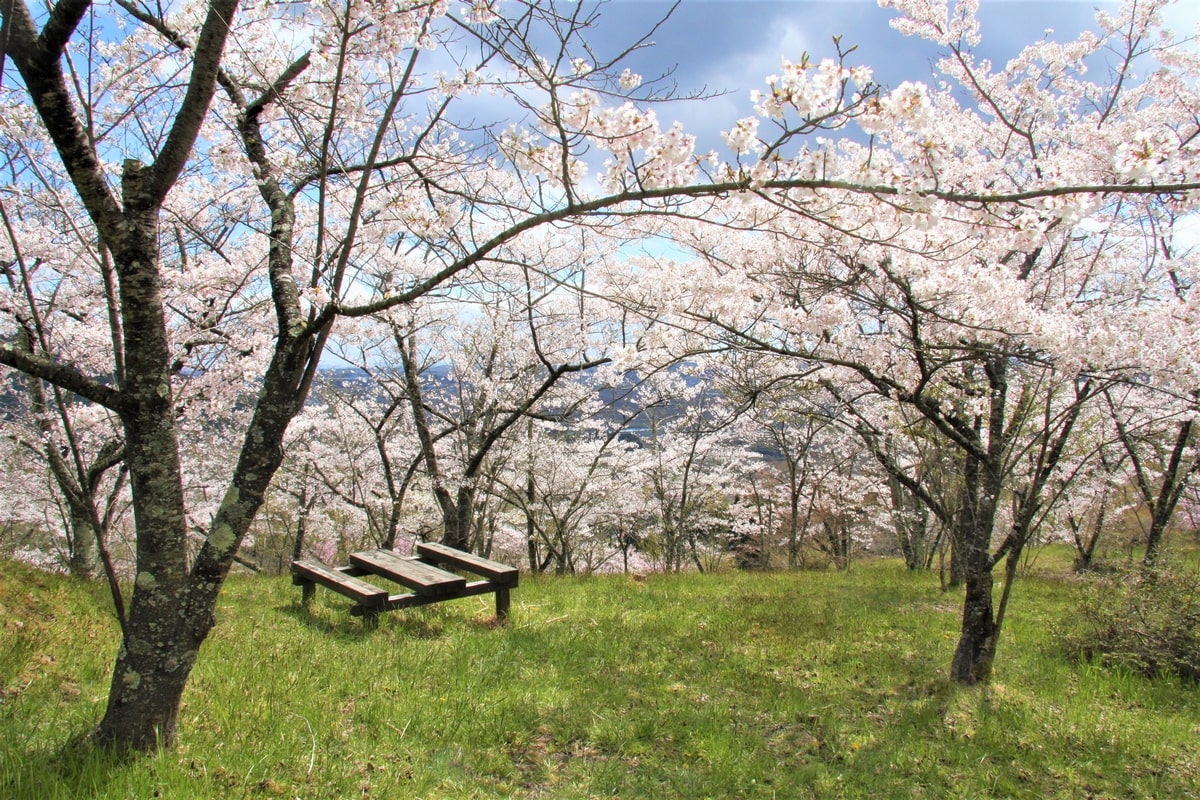再び春が到来 平泉 Spring returns to Hiraizumi
平泉の春は季節の移り変わりがはっきりと感じられます。冬の間に積もった雪と氷が溶けだし、土も地表に顔を出し始め、寒い冬の間眠っていた下萠(しもたえ)もようやくニョキニョキと伸びてきます。そして、枯れ木にも芽が膨らみ始め、そのうち、日本ザクラの花が咲くのは特に早い。
日本、そして世界各地でも、桜は春の目印として考えられることが多い。西日本より冬が長くて寒い東日本では更にそうです。桜は明るくて華奢な花でもあり、東北の人に暖かい春の到来を告げる。そして、こちら平泉町では、桜は町花でもある。それゆえに、町内のあらゆる所に桜は咲き、ほとんどどこでも見れます。庭にも公園にも道端にも、平泉の春の景色の大きな一部分です。
The spring months in Hiraizumi bring some stark reminders of the changing seasons. First, the snow and ice from the cold winter melts away, and the ground emerges. The overwintering plants are exposed and begin to stretch and unfold in the sunlight once again, while fresh shoots start to emerge, and the bare trees grow dotted with buds. And among those trees, one of the earliest to flower is the Japanese cherry blossom – the sakura.
The sakura is a widely beloved symbol of spring all throughout Japan, and beyond. That’s certainly the case here in the north of Japan, where heavy snow and longer, cold, dark winters are the rule, and the delicate blossoms are a striking and reliable sign of the return to warmer weather. Sakura are even Hiraizumi’s official town flower! Accordingly, you can spot sakura trees just about anywhere in town, as they’ve been cultivated or allowed to remain where they grow for many, many years. In gardens, yards, and by the roadside, they’re an everpresent piece of Hiraizumi’s visual backdrop in spring.

This ancient edohigan sakura, estimated at over 360 years old, stands inconspicuously on a corner on the road to Takkoku-no-Iwaya temple.
数百年前の平泉の時代からも、この町は桜の名所として注目されていました。12世紀に西行、そして17世紀に松尾芭蕉が平泉を訪れ、東にそびえ立つ束稲山の桜山を句に詠み、その価値を高く評価しました。当時からは束稲山の桜は多少減ってしまいましたが、いまだに大文字キャンプ場やハイキングコース、木工芸館の近くに桜の木が育てられています。山の上にたどり着くまでにはずいぶんと登り路にはなりますが、上から見ると、フワフワな桜の曇に囲まれた広い町、川、そしてずっと向こうの山までの景色が印象に残ります。
Even centuries ago, Mt. Tabashine, standing to the east of central Hiraizumi, across the rice paddies, was noted for its groves of sakura. Famous figures in Japan’s literary history, such as the 12th century poet, Saigyō, and the 17th century writer Matsuō Bashō, have both remarked on the beauty of Tabashine’s sakura trees, and though their numbers have declined in the hundreds of years since, a field of sakura is still cultivated to this day on the mountain, near the campgrounds and the woodworking center, just below a hiking trailhead. It may be a climb to get there, but the expanse of the river valley and the town stretching out below the canopy of cloudy, delicate flowers is a memorable sight.
また、もっと近くにも桜スポットがたくさんあります。町内のあらゆるところ、庭や団地、田畑や道端にも、ちょっとした散歩だけで思う存分見ることができます。たくさんの桜が並び一目で見ることができる国道300号は特におすすめです。中尊寺に向かうと自然と通る道で、アクセスはとても便利。徒歩や自転車、車、バスでも道路の両側に並ぶ桜の木の行列が綺麗に見えます。石畳の歩道と足元の水仙も魅力的で、桜の向こうには東の山まで広がる景色も雄大です。
Much more accessible are the trees that line the roads of central Hiraizumi, nearer the visitor attractions and train station, and stand in small copses in parks and gardens. While there are outstanding individual trees, and even a few that are officially recognized for their advanced age (upwards of 150 years!), one of the most notable stretches is along route 300, the usual route from the station to Chūson-ji Temple. Lined with sakura trees along the majority of the 25-minute walk, the cobbled sidewalk, ample sunlight, and glimpses of the valley and mountains to the east also make this a charming, photogenic, and easily accessible sakura hotspot during blooming season.
ここほかにも、ちょっと見渡してみれば、ほぼどこにでも立派な一本桜があちこちには当たり前のようにもあります。春の暖かい晴れの日にゆっくりと世界遺産の地を巡りながら新緑とフワっと広げた満開の桜を楽しみたい方は、桜の季節に平泉をぜひ訪ねてみてください。
Even outside of this stretch, keep your eyes peeled and you are sure to find lovely trees nearly everywhere you look. If you are looking to spend to enjoy a leisurely day in the warm spring sun, taking in fresh greenery and the cloudy pink and white cotton-candy blossoms of the sakura trees while enjoying historical destinations like our World Heritage temples, consider visiting Hiraizumi in sakura season, typically mid-April to early May.




